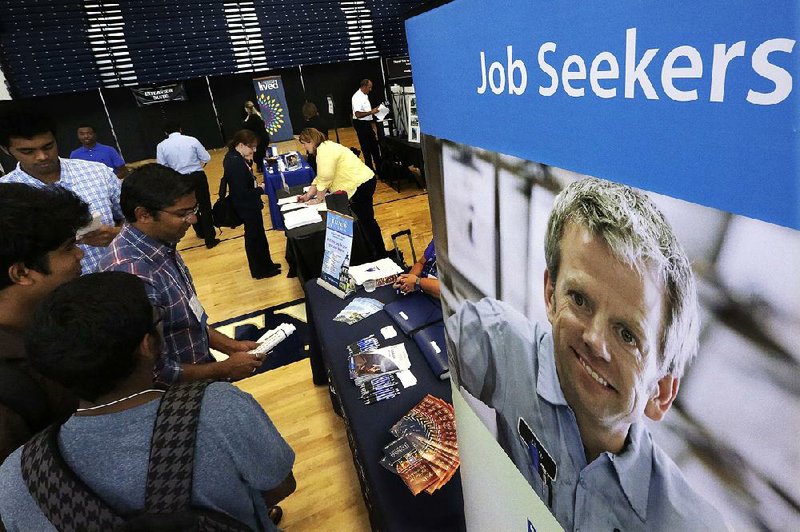Job openings in the U.S. climbed in September to the second-highest total on record, a sign the labor market continues to strengthen.
The number of positions waiting to be filled increased by 149,000 to about 5.53 million from a revised 5.38 million in August, a report from the Labor Department showed Thursday. September openings were second only to July's 5.67 million, which was the highest since records began in December 2000. The pace of hiring eased.
Companies are not only holding on to workers they already have but also seeking new ones amid strengthening U.S. demand for their goods and services. A tighter labor market may produce the type of wage pressure central bankers need to see as they consider raising interest rates as soon as next month, economists said.
"The labor market looks solid, and solid is good," David Berson, chief economist at Nationwide Insurance in Columbus, Ohio, said before the report. "Businesses have the capacity to hire people if they can find people with the right skills."
The median forecast in a Bloomberg survey of economists projected 5.4 million openings in September. The rate of openings climbed to 3.7 percent in September from 3.6 percent in August.
The job openings rate is defined as the number of openings for the month divided by the sum of the number of employees who worked or received pay and the number of openings.
The Job Openings and Labor Turnover Survey adds context to monthly payroll data by measuring dynamics such as resignations, help-wanted ads and the pace of hiring. Although it lags behind the Labor Department's other jobs figures by a month, Federal Reserve Chairman Janet Yellen follows the report as a measure of labor-market tightness and worker confidence.
The report showed job openings increased at professional and business services, retailers and health care providers. There was less availability in construction and manufacturing.
The number of people hired dropped to 5.05 million, while the hiring rate fell to 3.5 percent from 3.6 percent. The gauge calculates the number of hires during the month divided by the number who worked or received pay during that period.
Some 2.72 million people quit their jobs in September, down from the previous month's 2.77 million. The resignations rate, which shows the willingness of workers to leave jobs, held at 1.9 percent and compares with a 2 percent reading when the recession started at the end of 2007.
Total dismissals, which exclude retirements and those who left jobs voluntarily, was little changed in September at 1.73 million, keeping the rate of firings at 1.2 percent.
There were about 1.4 unemployed people vying for every opening in September, compared with 1.8 when the 18-month recession began in December 2007, the figures show.
In the 12 months through September, the economy created a net 2.7 million jobs, representing 60.9 million hires and 58.2 million separations.
The report follows the October employment figures from the Labor Department, both an increase in hiring and stronger wage pressure. Payrolls climbed by 271,000 last month, the biggest increase this year, and the unemployment rate fell to 5 percent. Meanwhile average hourly pay rose 2.5 percent from a year earlier, the most since July 2009.
St. Louis Fed President James Bullard said last week that a stronger labor market and reduced financial market stress are among the factors supporting the case for the central bank to raise rates. The Fed's next meeting is Dec. 15-16.
The number of people seeking unemployment aid was unchanged last week, a sign that most businesses are reluctant to cut jobs.
The Labor Department said Thursday that weekly applications for unemployment benefits remained at a seasonally adjusted 276,000, the same as the previous week. The four-week average, a less volatile measure, rose 5,000 to 267,750.
Applications are a proxy for layoffs. Three weeks ago, the average dropped to its lowest level since December 1973. That suggests employers are confident the economy will continue to expand and see little reason to let go of their workers.
After stumbling in the July-September quarter under the weight of slowing overseas growth and a strong dollar, the U.S. economy is forecast to rebound in the final three months of this year. Americans are still spending on autos, electronics and restaurant meals at a healthy rate, supporting a pickup in hiring last month.
Hiring is typically healthy when applications are so low.
Information for this article was contributed by Victoria Stilwell and Chris Middleton of Bloomberg News and by Christopher S. Rugaber of The Associated Press.
Business on 11/13/2015
